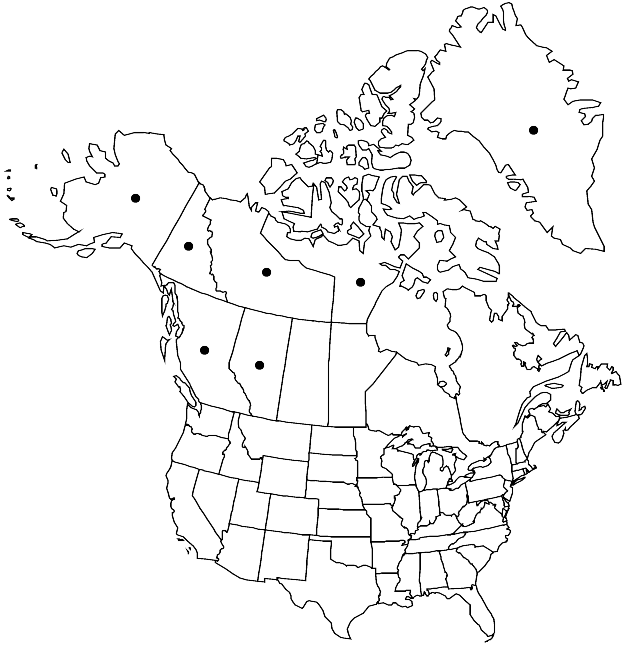Ptychostomum archangelicum
Phytologia 87: 20. 2005.
Plants in dense or open turfs or scattered individuals, green, red-green, or yellow-green. Stems 0.4–1.5 cm, tufted, comose, innovations elongate and evenly foliate; often strongly radiculose. Leaves yellow-green to red-green, weakly to strongly contorted or shrunken when dry, ovate-lanceolate, flat to weakly concave, (0.4–)0.8–2(–2.5) mm, enlarged toward stem apex; base not decurrent; margins revolute to mid leaf; limbidium strong, of 2 or 3 rows; apex acuminate; costa long-excurrent, awn straight, not or slightly denticulate; proximal laminal cells 3–4:1, same width or narrower than more distal cells; medial and distal cells rhomboidal, 12–18 µm wide, 3–4:1, walls thin. Specialized asexual reproduction absent. Sexual condition synoicous. Seta 1–3 cm. Capsule brown, pyriform, symmetric, 2–3 mm, mouth yellow; operculum short-convex, not or weakly apiculate; peristome usually well developed to slightly reduced; exostome teeth yellow basally, hyaline distally, lamellae usually curved mid tooth, pores absent from exostome along mid line; endostome sometimes weakly adherent to exostome at base, basal membrane high, 1/2 exostome height, segments with ovate perforations, cilia reduced or absent. Spores (22–)25–30 µm, strongly papillose, dark brown to black.
Phenology: Capsules mature Jul–Aug.
Habitat: Dry calcareous soil in arctic tundra, alpine regions to the south
Elevation: low to high elevations
Distribution

Circumpolar arctic-alpine, Greenland, Alta., B.C., N.W.T., Nunavut, Yukon, Alaska, Eurasia.
Discussion
Ptychostomum archangelicum is a small plant found on dry calcareous tundra, and is similar to P. inclinatum. D. T. Holyoak (2004) placed P. curvatum and P. inclinatum into synonymy under P. archangelicum. Ptychostomum inclinatum is here tentatively retained based on the pale, somewhat smaller spores, free endostome, and occasional presence of long cilia. Ptychostomum curvatum is not known from the flora area. Capsules are needed for identification. The costae of P. archangelicum are red.
Selected References
None.